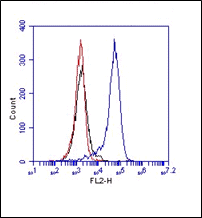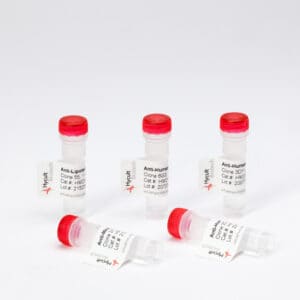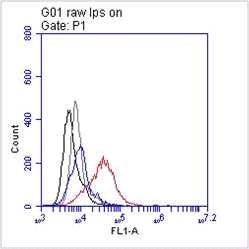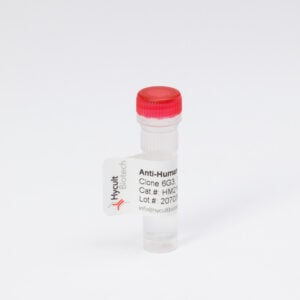CD180, Mouse, mAb RP/14
€133.00 – €368.00
Radioprotective 105 (RP105, CD180) is a type 1 transmembrane protein of 105 kDa with extracellular leucine-rich repeats (LLRs) and a short cytoplasmic tail. RP105, assigned as CD180, is similar to Drosophila Toll in the extracellular LLRs. Radioprotective 105 (RP105, CD180) expression is largely restricted to immune cells including CD19+ B cells and macrophages. Histological studies showed that RP105 is expressed mainly on mature B cells in mantle zones. Antibody-mediated (RP/14) cross-linking of RP105 induces resistance against irradiation-induced apoptosis, B-cell proliferation, and up-regulation of a costimulatory molecule B7.2, revealing RP105 as a potent regulator of B-cell activation. RP105 (CD180) has an important role in B-cell activation by LPS. It is important to note that RP105 associates with MD1, which is in this context important for RP105 with respect to B-cell surface expression and LPS recognition and signalling. MD-1 seems to be requisite for efficient expression of RP105.





